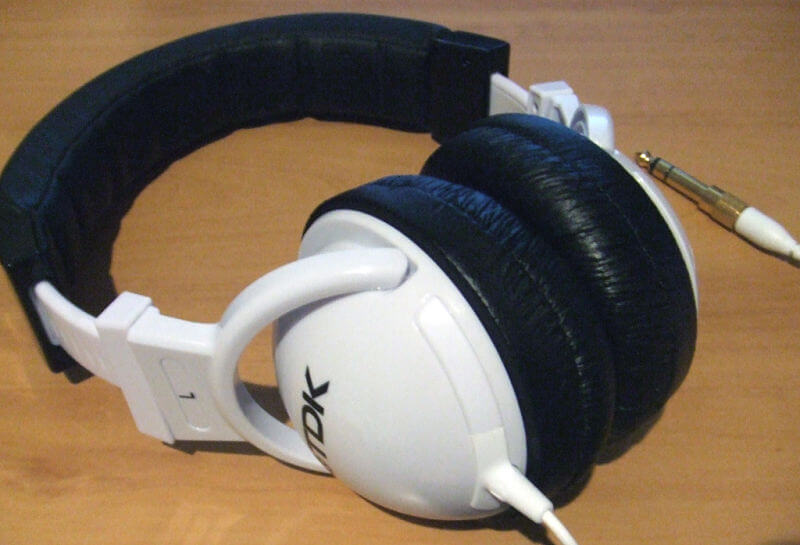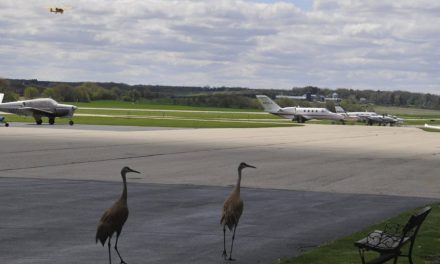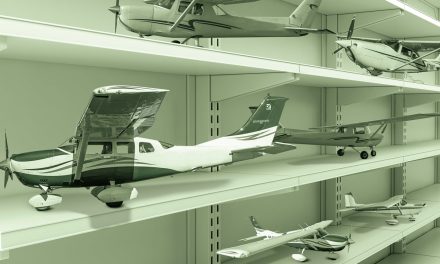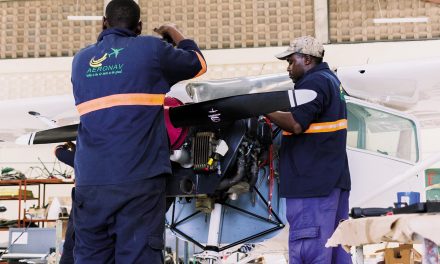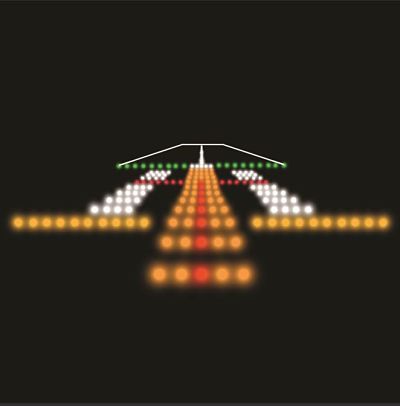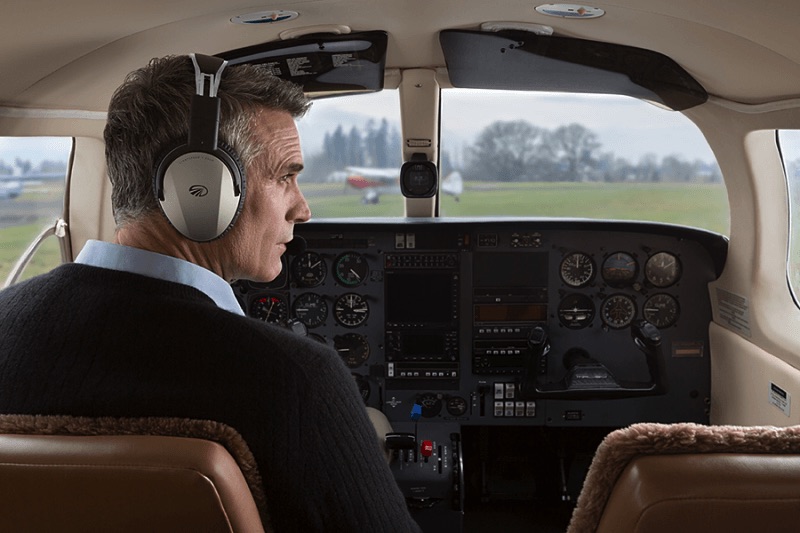
Photo courtesy of Lightspeed Aviation
I was tired. No, beyond tired. I was fairly well wiped. There are no legal limits imposed on flight hours associated with ferry flying and, stupidly, I’d pressed my luck to finish a South African delivery of a Caravan so I could hurry back to Florida in time to fly the first Malibu Mirage to Germany.
I’d flown a 9-hour leg from St. John’s, Newfoundland, Canada, to Santa Maria Island in the Azores off the coast of Portugal. I refueled and continued on the 4-hour leg to Lanzarote, Canary Islands, off the coast of Morocco. I’d slept for 5 hours at the nearest hotel and lifted off at O-dark-thirty the following morning for the trip across the Western Sahara to Abidjan, Ivory Coast, which meant 10 hours en route. I’d made a semi-quick stop for fuel and flown another 5 hours across the Gulf of Guinea to Libreville, Gabon. That’s 4,500 nm in 2 days, none of it at much over 150 knots.
By the time I entered the pattern at Libreville, my brain was basically fried (“This is your brain without sleep.”) The constant drone of the Pratt & Whitney PT-6A had dulled my senses to a kind of somnambulistic confusion. This was several years before the first ANR headset, so I’d been dealing with 2 days of high decibels well beyond any reasonable tolerance. As I rolled out on final for Libreville, I was grateful the Caravan was such a simple airplane with forgiving landing characteristics.
Still, there was a voice far back in my head saying, “Bill, you are really dumb.” I was too tired to care.
Somehow, I managed to get the airplane on the ground without leaving pieces on the runway. I parked at Air Gabon, cleared customs in a daze and sleepwalked across the street to the Atlantique Hotel. I slept for about 11 hours and woke with partially restored hearing and a brace of sanity. The Mirage would have to wait.
I took a full day off in Libreville, lying on the beach and staring out at the Gulf of Guinea. Then, I continued 11 hours to Windhoek, Namibia, the following day, got a good sleep and flew on to Johannesburg a day after that. Two days later, when I returned to Florida, the first new production Mirage was still waiting for me in Vero Beach.
From such mistakes are accidents made
Fortunately, I avoided one despite my best efforts to the contrary.
Fatigue, noise fatigue in particular, is a special enemy of general aviation pilots, specifically because we’re our own worst enemies. I certainly was on that trip.
Back in the days of full contract ferry pricing (whatever money you had left over at the end was yours), some pilots used to press the limits of human endurance especially on long trips to the opposite side of the planet. Some pilots flying Pacific ferry routes to Australia, New Zealand, and Japan used to fly nonstop from Florida to California, refuel in Santa Barbara, sleep on a couch at the FBO for 3 or 4 hours, continue to Honolulu, do the same thing there, continue to Majuro, and make it to Australia or Japan in 3 or 4 days. I was never quite that stupid; what I did was dumb enough.
It seems noise suppression, like weight reduction, is one of the industry’s most impossible missions. Jets position the pilots far out on the pointy end with engines 80 feet behind and nothing out front to beat airflow against the windshield. Single-engine, tractor configured piston singles put the motive force directly in front of the pilot and the exhaust noise directly below.
As the owner of an older Mooney, I know exactly how loud a four-seat retractable in the 150- to 160-knot range can be. My airplane is a comfortable, efficient machine, wider than a Bonanza and nearly as fast, but it’s also one of the noisiest airplanes in the sky, partially because it’s old, but also because the noise attenuation wasn’t very advanced 45 years ago.
Engineers simply didn’t know how to build a quiet cockpit. Unlike automobiles, where weight isn’t a critical concern and you can simply stuff in all the soundproofing you want, airplanes must bow to reasonable weight limitations in order to preserve some semblance of payload.
Order Bill Cox’s new book My Sky – a travelogue of his life as a professional pilot.
Amazing headsets with active noise reduction (ANR)
I have two Lightspeed Zulu headsets in the front seats of my Mooney and two Bose headsets for passengers in back to keep the decibels at bay. Without them, the din would be about the same as a AA fuel dragster on burnout, enough to jar the wax from your ears. (Ok, maybe it’s not quite that bad, but it’s still definitely worth suppressing.)
Passive headsets have been around for decades, and they typically reduce noise levels by 10-20 decibels in the critical vocal range below 3,000 hertz. These products rely on the design itself to restrict noise, using such features as gel ear seals and clamp force to prevent noise from penetrating the headset.
Active noise reduction takes the science several steps further, actually treating the noise that does enter the headset. It’s not a new technology. Dr. Amar Bose began research on noise cancellation in 1978 and introduced his first ANR headset for the U.S. Air Force a decade later.
Active noise attenuation simply monitors the frequencies produced inside the headset, inverts it to an “anti-noise” signal, and transmits that to effectively cancel most of the offending decibels. ANR headsets produced by Bose, David Clark, Lightspeed, Sennheiser, and several other companies may reduce noise level by 30 db or more.
Good headsets help enormously, but the noise level in many airplanes remains a problem. Every once in awhile, I’ll remove my headset to check the ambient noise level and I’m always amazed at how loud it is.
The easy road to hearing loss
Recently, out of curiosity, I purchased an inexpensive sound meter and recorded a maximum noise level at climb power of 114 db. That’s especially bad news, as the threshold of hearing damage is considered to be 85 db maintained for longer than 8 hours. Raise the sound level to 100 db and you have only 15 minutes before there’s permanent damage. Above that, you’re rolling dice at any level.
Trouble is, hearing loss is insidious. At extremely high levels, you can actually feel the pain, a sure giveaway that you’re damaging your hearing, either temporarily or permanently. When I was a kid, a week or two ago, I used to hang out at drag strips on weekends, then wonder why I couldn’t hear much of anything for the next few days.
Even at lower volumes, some hearing loss is inevitable, as deterioration is cumulative with continued exposure to loud noise. It comes on gradually with repeated doses of high-volume sound, whether it’s music, industrial or aircraft noise, or NHRA Funny Cars.
When I began flying with Civil Air Patrol in the late 1950s, we used to stuff cotton in our ears in an attempt to protect our hearing. Eventually, a product called E.A.R., small yellow ear plugs, came on the market; I still use them when flying on the airlines. They helped a lot as headsets were fairly primitive in those days and didn’t really attenuate noise adequately.
Sadly, there’s precious little empirical data regarding noise fatigue in general aviation accidents, despite (or perhaps because of) ANR headsets. It seems hardly anyone flies without a headset these days, and that’s a good thing.
Three primary sources of internal noise
One is exhaust noise from the stack(s), most often exiting directly beneath the cabin. The second is the beat of airflow coming off the prop and bouncing against the windshield. A third source is the rush of outside air through the vents and leaking around the doors and through every possible opening in the fuselage.
There’s not a lot you can do about the low frequency collision of air against the windshield. I upgraded my airplane with a more swept Mooney 201 windshield several years ago, which is alleged to improve cruise performance and reduce the decibel count. I saw no change in either parameter.
Similarly, vents, windows, and doors are bound to leak at least a little. A properly fitted inflatable door seal can make a big difference, and I’ve seen some truly dramatic improvements, primarily on high-end models such as Piper 210s, Malibus, and Bonanzas.
Engine noise can be a matter of taste. If you fly a P-51, the hardened anger of a fully aroused V-12 Rolls-Royce Merlin can be a song from God. For many of the rest of us, however, engine noise is just that — noise, and it can be distracting, irritating, and even, in its most extreme forms, dangerous.
Power Flow Systems of Daytona Beach, Florida, decided to address the exhaust noise problem on airplanes fitted with its exhaust systems. Power Flow has been building tuned exhausts for a variety of general aviation models for several years, from Piper, Cessna, and Mooney to Beech, Aviat, and Diamond. A few years ago, Diamond Aircraft began installing Power Flow tuned exhausts as standard on the DA-40 Star.
I can personally attest that the Power Flow tuned exhaust works very well. My airplane was fitted with a Power Flow system in 2005, and the result was more power and 3 to 5 knots better cruise, depending upon power setting and altitude. Nothing is free, though; more power inevitably meant higher fuel burn. My choices were to opt for more speed or use less power and still achieve the same cruise. I chose more cruise speed and higher burn.
One almost inevitable result of additional power is more noise, and Power Flow had received some reports that its first-generation tuned exhaust’s increased power translated directly to a higher noise level. Company President Darren Tilman’s demonstrator is a Mooney 201, and he commented that he’d flown with a customer in an older, ’60s vintage, M20E Mooney fitted with the first-generation Power Flow exhaust, and even he was surprised how loud it was — about 114 db.
Accordingly, the company came up with an improved, super-soundproofed, stainless steel, ceramiccoated exhaust. The new pipe mounts in the same location, and Power Flow flight tested the system and determined there was no cruise loss with the improved exhaust. The company knew any performance loss could be a critical litmus test that might doom the Quiet Pipe.
The result of the quieting effort was an impressive 13-db reduction on Mooney M20E/Fs over the previous system. (The decibel scale is logarithmic, so 13 db is a huge improvement.)
The same Quiet Pipe exhaust may be applied to the later 200-hp Mooney 201, but aircraft designer Roy Lopresti had already reworked the model’s exhaust system back in the mid-’70s during the airplane’s development process. As a result, the reduced noise level with the new Power Flow pipe is more like 3 to 4 db on the 201, still a substantial improvement, but not as dramatic as the result on older Mooneys such as mine.
The new exhaust is practically indistinguishable from the old. It’s about ½-inch larger in diameter and an inch shorter, but from a distance, most people won’t be able to tell the difference.
The Quiet Pipe won’t do you much good unless you already own a Power Flow tuned exhaust. Fortunately, the company has sold some 3,700 systems, installed in a dozen models powered by four-cylinder Lycomings. The hush kit is available for 11 models served by Power Flow (only the Cardinal RG is excluded). Prices range from $650 to $990, and installation time is roughly 2 hours.
Noise suppression for general aviation is more than a convenience. It’s more than being able to hear every transmission from ATC distinctly or listen to your iPod in comfort at 10,500 feet over Omaha. Reducing the decibel count can make the cockpit environment less frenetic and the pilot’s job easier and safer.
If you’re smarter than I am, you won’t go flying for 15 hours in one day.

